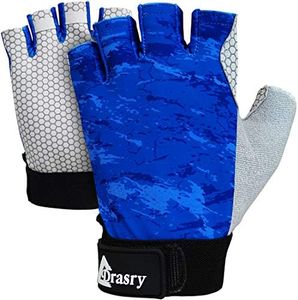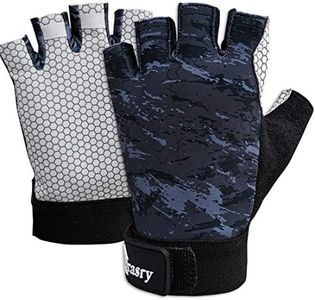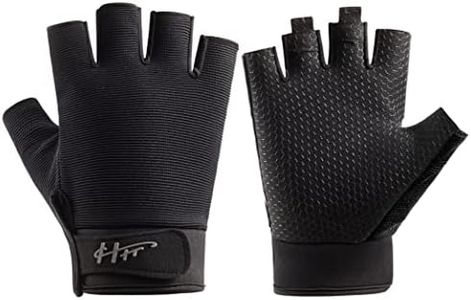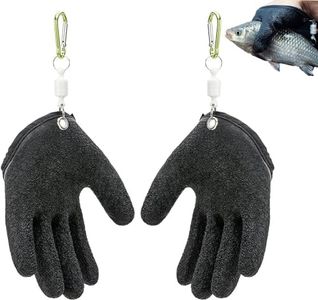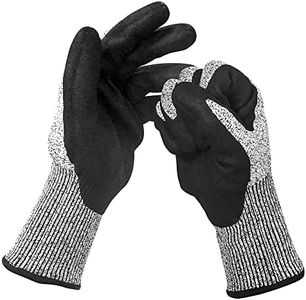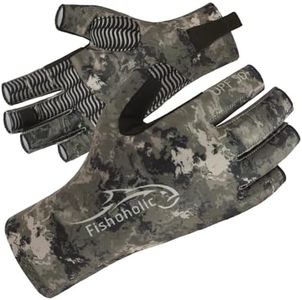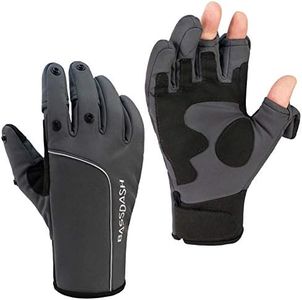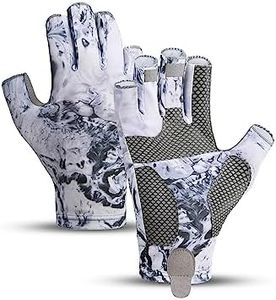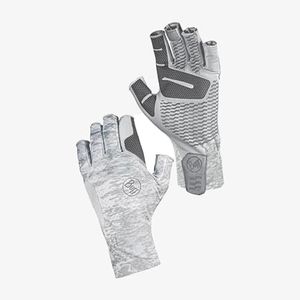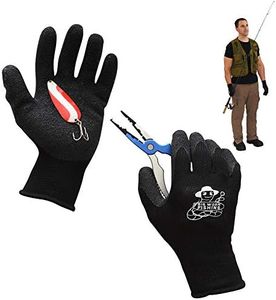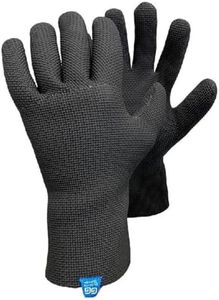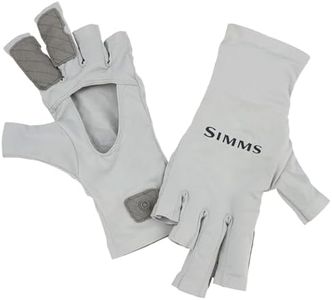We Use CookiesWe use cookies to enhance the security, performance,
functionality and for analytical and promotional activities. By continuing to browse this site you
are agreeing to our privacy policy
10 Best Fishing Gloves
From leading brands and best sellers available on the web.Buying Guide for the Best Fishing Gloves
Selecting the right fishing gloves can make your fishing experience much more comfortable, safe, and productive. The ideal gloves protect your hands from the elements, fish spines, sharp hooks, and sun exposure, all while allowing you enough flexibility and sensitivity to handle lines, lures, and catches. The best approach is to consider when and where you’re fishing, the kind of fishing you’ll be doing, and your personal preferences for comfort and dexterity.MaterialMaterial refers to what the gloves are made from, such as neoprene, synthetic fabrics, leather, or a combination. This is important because it affects durability, water resistance, warmth, and flexibility. Neoprene offers good water resistance and warmth, making it suitable for colder, wetter conditions. Synthetic fabrics are often lighter and more breathable, ideal for warm-weather fishing. Leather can provide strong protection but may feel stiffer. Choose your glove material based on your fishing environment: colder and wetter conditions call for warmer, waterproof materials, while hot, sunny days are better with breathable fabrics.
GripGrip refers to the texture and pattern on the palms and fingers of the gloves, which enhance your ability to securely hold onto slippery fish, wet lines, and gear. A strong grip is essential for safety and control, especially when handling sharp hooks or fighting large fish. Some gloves have rubberized or silicone patches for extra grip, while others may offer textured leather. If you often handle lively or large fish or need precise control over your tackle, look for gloves with reinforced or patterned grip surfaces.
Waterproofing and Water ResistanceThis characteristic indicates how well the gloves keep your hands dry. Waterproof gloves fully block water, keeping hands dry in heavy rain or when frequently submerged. Water-resistant gloves repel light splashes and dry quickly but won't keep your hands completely dry. If you'll be immersing your hands or fishing in rain-prone areas, prioritize waterproof gloves. For dry climates or occasional splashes, water resistance may be sufficient and can feel less bulky.
Finger CoverageFinger coverage refers to whether the gloves are full-fingered, half-fingered, or feature removable finger tips. Full-finger gloves offer maximum protection and warmth, but can reduce dexterity. Half-finger gloves expose the tips of your fingers for better feel and control when tying knots or handling small gear. Some models offer a hybrid design or fold-back finger tips for a balance of protection and precision. Consider full coverage for cold weather or rough conditions, and half fingered for greater dexterity during finesse fishing.
UV ProtectionUV protection is a feature where the glove material blocks harmful ultraviolet rays from the sun, preventing sunburn and long-term skin damage. This is especially important for anglers who fish for long hours in open areas. Materials may have a UPF (Ultraviolet Protection Factor) rating indicating their effectiveness. If you fish often in sunny conditions, prioritize gloves with a high UPF rating to protect the skin on your hands.
Fit and ComfortFit and comfort are about how well the gloves conform to your hands and how comfortable they feel for extended wear. Good fit ensures dexterity and prevents issues like blisters. Pay attention to sizing guides and consider whether you prefer a snug fit for precise handling or a looser fit for easy removal. The style and construction can also affect comfort, such as the presence of adjustable wrist closures or seamless fingertips.
DurabilityDurability refers to how well the gloves hold up to frequent use, exposure to water and sun, and contact with sharp objects. Key indicators include reinforced stitching, abrasion-resistant fabric, and quality materials. If you fish often or in rugged environments (e.g., saltwater, rocky rivers), look for gloves specifically designed to withstand tough conditions.
